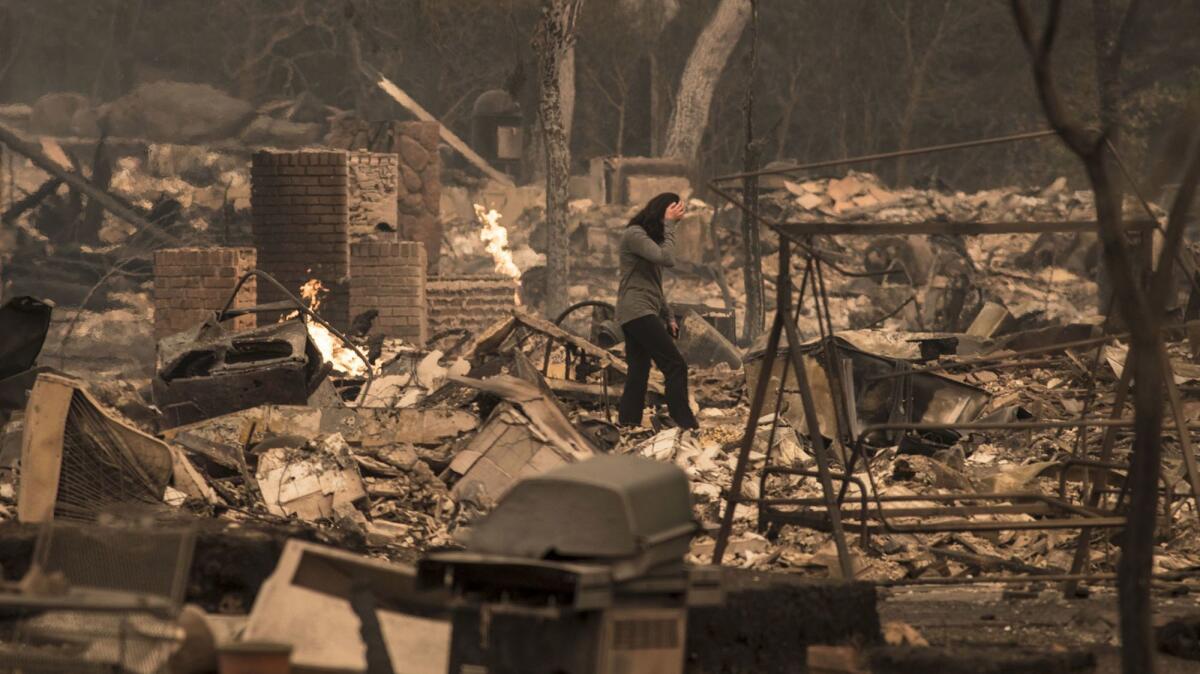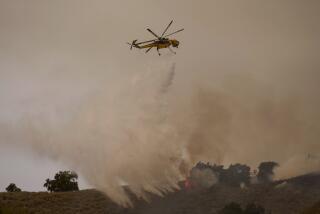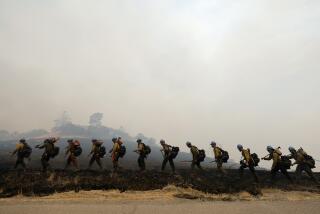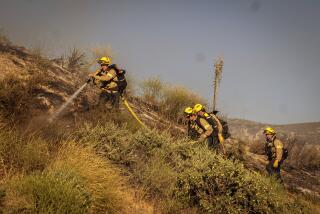‘Diablo winds’ fuel widespread destruction from fires in California wine country

A key reason why the fires burning through Napa and Sonoma counties became so devastating was that the ignitions happened at the worst possible moment: when extremely dry conditions combined with so-called Diablo winds that fanned flames on the ridge tops with gusts as high as 70 mph.
It’s similar to the conditions that the most destructive fire in California history, the October 1991 firestorm that struck the Oakland and Berkeley hills that killed 25 people and destroyed about 2,900 structures.
The wine country fires so far haven’t approached that level of catastrophe, with officials reporting at least 1,500 structures lost, in part because the area burned isn’t as densely populated.
Still, the wide range of the blazes in this region, covering eight counties, is astounding. Compared with the previous Lake County fires that have previously ravaged nearby areas, “here, the geographic extent to what has burned is kind of jaw-dropping, considering these fires didn’t start until late last night, and it’s mid-morning,” said UCLA climate scientist Daniel Swain.
Swain said the burn areas extend from Napa County to near the Central Valley, and parts of Santa Rosa have burned. “As the crow flies, that is not a short distance. That is more than 30 miles,” Swain said. “It’s probably not continuously burned, but that is on a different order of magnitude than the Lake County fires.”
“It’s definitely edging up there into one of the worst clusters of fires in California history,” Swain said. Cal Fire on Monday called the group of 14 fires the fifth most destructive on record, in terms of the number of structures that burned down.
October can be a troublesome month for firefighters throughout California. The normal weather pattern near the coast is for moist sea breezes to come off the Pacific Ocean and into the land. But in the fall, high pressure that builds into the Great Basin causes wind to shift in the opposite direction, said Jan Null, adjunct professor of meteorology at San Jose State University and former meteorologist with the National Weather Service.
In Southern California, they’re called Santa Ana winds, and in Northern California, they’re called Diablo winds. So in Northern California, air coming down from Nevada and Utah falling from an elevation of about 4,000 feet gets pushed down to sea level, and that air is compressed, and warm winds are created. Overnight, exceptionally dry winds came in screaming from the northeast to the southwest.
“Most of ... California has been dry for the last five months or so. Most of the vegetation has dried out. October is always a tough month for fires in California,” Null said. “We get these dry, desiccating, downslope winds.”
Fires in Northern an Southern Calif. create widespread damage, destroying homes and claiming live
Folks in the cities of the Bay Area may not have been as acutely aware of the fire risk, as areas of lower elevations didn’t feel the wind gusts that those on the ridges felt, Swain said.
“What may have surprised people is that these strong winds didn’t manifest themselves in the cities,” Swain said. “But they moved impossibly fast on the ridgeline.”
But just 500 to 1,000 feet higher, “the winds are much stronger.”
Swain said the winds were well in excess of 50 mph, with gusts getting close to 70 mph. And the fires ignited during the peak of the wind event. “They coincided with extremely low humidity. …It’s just about the worst case weather conditions to spread a wildfire quickly, given the fuel,” Swain said.
The fires then spread quickly, hopping from ridge top to ridge top without bothering to burn everything in between. Fire fronts stretched several miles long, “and that’s what made it really hard to fight them,” Swain said.
Swain said the worst wind conditions are over, “but conditions are still not good,” with bad conditions still expected into Tuesday. “There is still the rest of today to get through,” Swain said midday Monday. Southern California has also begun to encounter a strong wind event Monday.
The North Bay area had a wet winter, allowing abundant vegetation to grow, followed by an extraordinarily hot summer, “including some all-time record heat that really dried out these fuels,” Swain said.
UPDATES:
3 p.m.: This article was updated with information on the 1991 Oakland hills fire, which according to the California Department of Forestry and Fire Protection, destroyed about 2,900 structures and was the most destructive fire in California history.
This article was originally published at 12:50 p.m.
More to Read
Sign up for Essential California
The most important California stories and recommendations in your inbox every morning.
You may occasionally receive promotional content from the Los Angeles Times.











